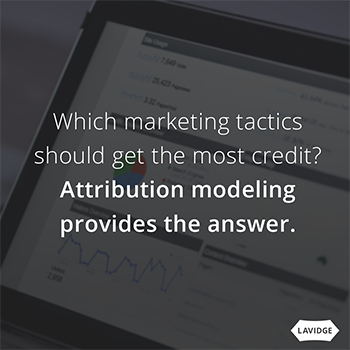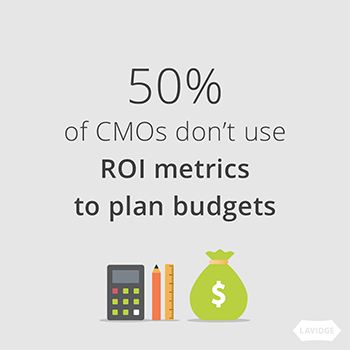Need fresh thinking? Help is a few keystrokes away.
Healthcare Marketing Bragging Rights
You’re fresh out of medical school and have teamed up with a few other young physicians to establish a new family practice. All you need are some patients and you can start paying off your student loans. It’s a good thing your brother-in-law is a wizard at marketing. It isn’t long before he’s started a robust patient-acquisition campaign that includes email marketing, Facebook and Twitter posts, paid search advertising, and some digital ad retargeting.
 Patients begin streaming in, but your brother-in-law seems unable to figure out which marketing channel performed best. Did more patients schedule an appointment after seeing a Facebook post? Or did they click on a paid search ad? Perhaps a combination of marketing efforts did the trick. If your brother-in-law knew about attribution modeling, he could figure out exactly which tactics are working best and how to tweak the campaign to attract even more patients.
Patients begin streaming in, but your brother-in-law seems unable to figure out which marketing channel performed best. Did more patients schedule an appointment after seeing a Facebook post? Or did they click on a paid search ad? Perhaps a combination of marketing efforts did the trick. If your brother-in-law knew about attribution modeling, he could figure out exactly which tactics are working best and how to tweak the campaign to attract even more patients.
Don’t be afraid of the term attribution modeling. It’s a fancy way of answering a simple question: Which marketing tactics should get the most credit for patient appointments? By using Google Analytics and innovative new techniques for evaluating online behavior, we can determine how each element of a digital marketing campaign is performing.
Attribution modeling is made possible by a sophisticated system that tracks the breadcrumbs you leave when visiting websites, reading posts and clicking on ads. Call it Big Brother if you want, but almost everything you do online is tracked and measured. This allows skilled marketers to monitor the effectiveness of integrated multi-channel campaigns.
The customer decision journey
The beginning of this article focused on a physician who established a new practice. Now, let’s look at how one of his patients booked an appointment.
Jane was new to town and needed a new family doctor. Using Google, she searched for physicians in her zip code. She saw a listing for the new doctor, clicked on it and went to the website. There, she saw links to the practice’s Facebook page, so she clicked on that and read some delightful posts. Next, she went to her health plan’s website to ensure that the doctor was a listed provider. She clicked on the listing, which took her back to the practice’s website where she selected the make-an-appointment button.
Jane’s customer journey looks like this:
Organic search
⇓
Doctor website
⇓
Facebook
⇓
Health plan
⇓
Appointment
It would be good to know which of those channels was most responsible for acquiring the patient. Attribution modeling does just that—it looks at Jane’s digital footprint to determine her journey toward making an appointment. If the doctor’s brother-in-law knew the finer points of using Google Analytics, he could see Jane’s online customer journey, judge which channel is working best, and modify the activities.
But which tactic is doing the heavy lifting? Jane’s initial web search? The Facebook posts she enjoyed? The insurance plan listing? To some extent, the answer is all of them. There are a number of different attribution models that can help marketers make sense of this.
One digital marketing attribution model—the “first click” method—gives most credit to the first activity that started the decision-making process. In Jane’s case, that would be her initial Google search. This method suggests that organic search should be attributed with all the credit. Jane first discovered the doctor through organic search, but it doesn’t seem fair that the subsequent steps shouldn’t get some credit. Truth be told, the Facebook posts are what sealed the deal for Jane.
Another model—sometimes referred to as the “last click” method—would give most credit to the listing on Jane’s health insurance plan website. After all, she was on the site, clicked on the doctor’s listing and made the appointment. But this model doesn’t tell the whole story, either. Without the organic search and the Facebook posts, Jane never would have made the appointment.
Other attribution models give equal or weighted credit for each of Jane’s stops on the way toward finding a new doctor. No matter the method, this kind of data can help marketers refine a campaign by increasing or decreasing spending for each channel. Such insight can help craft an optimal marketing program.
The newest attribution model is known as game theory, which was created by Lloyd S. Shapley, an economic Nobel Prize winner. This model analyzes each element of the customer journey and suggests how outcomes would change if each of the tactics were removed or modified.
This is the science of effective online selling—a brave new world that helps marketing analysts use objective data to predict behavior and put the return in ROI.
Need help?
Not sure where to start? No problem. LAVIDGE experts in attribution modeling and healthcare analytics can point the way.
To learn more, give us a call at 480.998.2600 or send email to [email protected].
Common Attribution Modeling Methods
-
Last interaction: Attributes 100% of the conversion value to the last channel with which the customer interacted before buying or converting.
-
Last AdWords click: Attributes 100% of the conversion value to the most recent AdWords ad that the customer clicked before buying or converting.
-
First interaction: Attributes 100% of the conversion value to the first channel with which the customer interacted.
-
Linear Attribution: Gives equal credit to each channel interaction on the way to conversion.
-
Time decay Attribution: Gives weighted credit to each channel based on time since customer journey began.
-
Game theory: Allows analysts to predict outcomes by changing, adding or removing marketing tactics.
(Source: Google)



